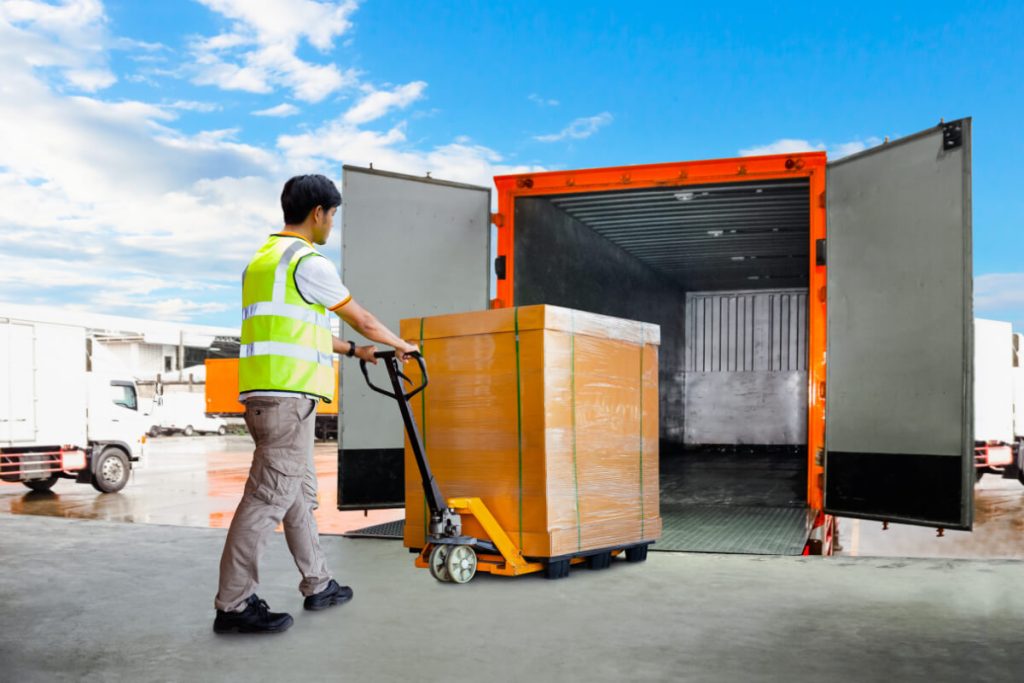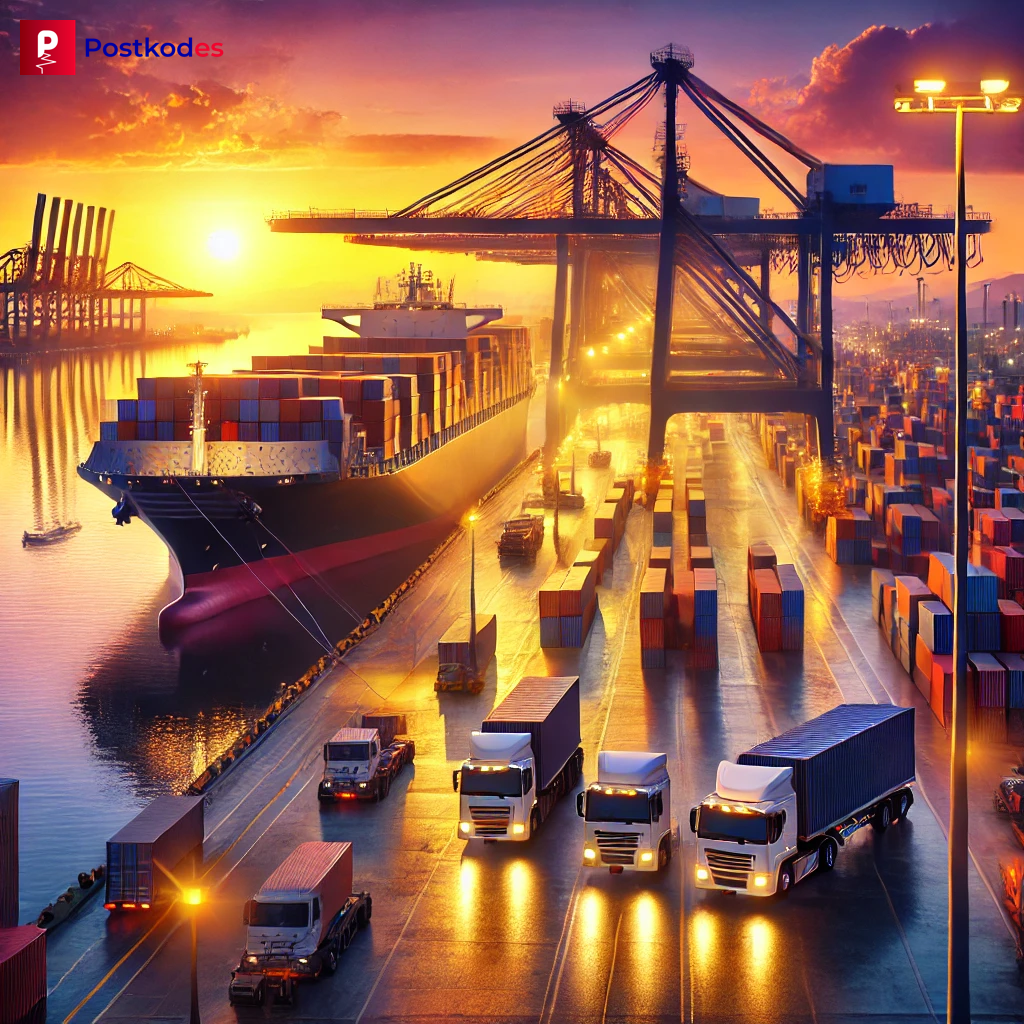What Are Sea Freight Services?
Sea freight services are one of the most cost-effective and reliable methods for transporting large volumes of goods across international borders. It involves shipping cargo via container ships and is widely used by businesses and individuals looking to move bulk shipments.

Why Choose Sea Freight Over Other Shipping Methods?
- Cost-Effective: Lower costs compared to air freight.
- Ideal for Heavy Cargo: Suitable for large and bulky shipments.
- Eco-Friendly: Less carbon footprint compared to air transport.
- Secure and Reliable: Containers provide added protection for goods.
Our Sea Freight Process (Step-by-Step Guide)
To ensure smooth and efficient shipping, we follow a structured sea freight process:
- Booking & Documentation – We collect all necessary details and paperwork.
- Cargo Pickup & Consolidation – Goods are picked up and grouped for shipping.
- Customs Clearance & Compliance – We handle all required customs procedures.
- Container Loading & Transport – Cargo is loaded into secure containers and shipped.
- Sea Freight Container Tracking – Clients can track their shipment in real-time.
- Port Arrival & Customs Processing – On arrival, cargo goes through customs again.
- Final Delivery to Destination – Goods are transported to the final recipient.
Each step is designed to ensure a hassle-free and secure shipping experience.
Understanding Sea Freight Costs
When choosing a sea freight company, it is crucial to understand the cost structure. Several factors influence sea freight rates per kg, including:
| Cost Factor | Description |
|---|---|
| Weight & Volume | Charges are based on cubic meters (CBM) or weight. |
| Container Type | Full Container Load (FCL) or Less than Container Load (LCL). |
| Shipping Route | Longer distances and high-demand routes may cost more. |
| Customs Duties & Taxes | Varies by country and type of goods. |
| Fuel Surcharge | Fuel prices affect the overall shipping cost. |
How to Calculate Sea Freight Costs?
To estimate your shipping cost:
- Determine the cargo volume in cubic meters.
- Select between FCL or LCL based on shipment size.
- Factor in additional costs like documentation and customs duties.
Sea Freight Services We Offer (Service Categories)
We offer a range of sea freight services to cater to different shipping needs:
- Full Container Load (FCL): Best for large shipments needing an entire container.
- Less than Container Load (LCL): Cost-effective option for smaller cargo loads.
- Refrigerated & Temperature-Controlled Shipping: Ideal for perishable goods.
- Oversized & Project Cargo: Shipping of large machinery and equipment.
- Roll-on/Roll-off (RoRo) Shipping: Best for vehicles and wheeled cargo.
- Door-to-Door & Port-to-Port Services: Flexible delivery options tailored to your needs.
Types of Containers Used in Sea Freight Logistics
Different types of containers are used in sea freight logistics, depending on the nature of the cargo:
| Container Type | Purpose |
| Dry Containers | Standard shipping of dry goods. |
| Refrigerated Containers | Used for perishable goods. |
| Open-Top Containers | Ideal for oversized cargo. |
| Flat Rack Containers | Suitable for heavy machinery. |
| Tank Containers | Designed for transporting liquids. |

Tracking Your Shipment: How Sea Freight Container Tracking Works
One of the biggest concerns for shippers is knowing where their cargo is at all times. Sea freight container tracking allows businesses and individuals to monitor their shipments in real-time.
Tracking Methods:
- Bill of Lading (BOL) Number: The unique reference number for shipments.
- Carrier Websites: Many shipping companies provide online tracking.
- GPS & RFID: Advanced tracking technologies for real-time updates.
Choosing the Right Sea Freight Company
Selecting the right sea freight company ensures safe and cost-effective shipping. Here’s what to consider:
- Reputation & Experience: Choose a well-established company with global connections.
- Service Coverage: Ensure they cover your preferred routes.
- Customs Handling: A good provider should offer customs clearance services.
- Transparent Pricing: Get a breakdown of costs to avoid hidden charges.
How to Avoid Hidden Charges?
- Always request a detailed quote.
- Check for additional port fees.
- Verify insurance coverage.
Why Choose Postkodes as a Sea Freight Company?
At Postkodes, we go beyond just transporting goods – we ensure an exceptional customer experience:
✔ Competitive Pricing: Affordable rates without compromising service quality.
✔ Reliable Tracking: Real-time sea freight container tracking for complete transparency.
✔ Global Network: Strong partnerships with major shipping lines and ports worldwide.
✔ End-to-End Support: From documentation to customs clearance, we handle it all.
✔ Fast & Secure Shipping: On-time deliveries with high safety standards.
When you choose Postkodes, you choose efficiency, reliability, and seamless international shipping.
Read More: Ghana to Australia Sea Freight Cost: A Comprehensive Guide
Common Challenges in Sea Freight Logistics and How to Overcome Them
| Challenge | Solution |
| Delays Due to Weather | Plan shipments in advance and track forecasts. |
| Customs Clearance Issues | Ensure proper documentation and compliance. |
| Lost or Damaged Goods | Use a reputable shipping company with insurance options. |
| High Freight Costs | Compare multiple service providers to get the best rate. |
Conclusion
Choosing the right sea freight services can significantly impact shipping efficiency and costs. Understanding sea freight logistics, tracking, and pricing helps businesses and individuals make informed decisions. Whether you need cost-effective shipping solutions or real-time sea freight container tracking, the right sea freight company will ensure a seamless experience.
For more information on how we can help with your freight needs, visit Postkodes and get started with a hassle-free shipping experience today!
FAQs on Sea Freight Services
1. How long does sea freight take?
Transit times vary based on the shipping route and destination. Generally, international shipments take anywhere between 20 to 45 days. Factors like weather conditions, port congestion, and customs clearance can impact the overall transit time.
2. What is the difference between FCL and LCL?
FCL (Full Container Load) is when a single shipper books an entire container, making it faster and more secure. LCL (Less than Container Load) allows multiple shippers to share a container, reducing costs but potentially increasing transit time due to consolidation and deconsolidation processes.
3. Can I track my sea freight shipment?
Yes, most shipping carriers provide sea freight container tracking services. You can monitor your shipment’s progress in real time using GPS, RFID, or carrier tracking portals. This helps you stay updated on estimated arrival times and potential delays.
4. What are the cheapest shipping routes?
The most cost-effective shipping routes are those with high cargo traffic, such as Asia to North America, Asia to Europe, and intra-Asia routes. These routes have lower costs due to economies of scale, frequent departures, and well-developed port infrastructure.
5. Do I need insurance for sea freight shipments?
Yes, it is highly recommended to get cargo insurance for sea freight shipments. Insurance protects your goods from potential risks such as theft, damage, and natural disasters during transit. Different policies offer varying levels of coverage, so it’s best to assess your shipment’s value and risks before choosing an insurance plan.
6. How are sea freight charges calculated?
Sea freight rates per kg are calculated based on cargo weight, volume, shipping route, container type (FCL or LCL), and additional port charges or customs duties. Shipping companies may also factor in fuel surcharges and seasonal fluctuations.
7. What types of goods can be shipped via sea freight?
Sea freight is suitable for almost all types of goods, including electronics, industrial machinery, automobiles, raw materials, clothing, and perishable items. However, certain hazardous materials and restricted goods may require special permits and handling.
8. Can sea freight be used for personal shipments?
Yes, individuals can use sea freight to transport personal goods such as household items, furniture, and vehicles. Many people opt for this method when relocating internationally, as it is a more economical alternative to air freight.
9. How do I prepare my goods for sea freight?
To ensure safe transit, package your goods properly using sturdy materials. Label each package clearly with shipment details, and ensure all required documentation, such as commercial invoices and customs declarations, is complete. For fragile items, use protective cushioning and waterproof packaging.



